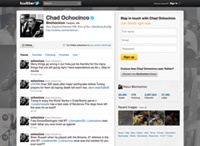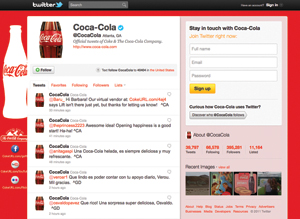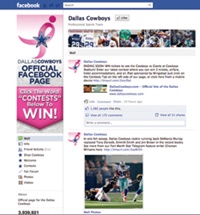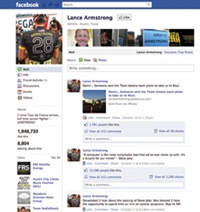Lance Armstrong and Chad Ochocinco both have millions of Facebook fans and Twitter followers, but there’s a difference between their abilities to get people to buy something or believe in something just as there’s a difference between the power of the Yankees’ sway and that of the Cowboys.
Three years ago, I was prepping for a meeting with a major brand to convince them that my celebrity client’s social media influence was more valuable than others’ and, therefore, they should invest their dollars in my proposed social media endorsement deal. Social media, the equivalent of the wild, wild west for marketing and measurement, was emerging into conversations. Until this point, Twitter was the opposite of popular and Facebook was a place online where college students hung out.
The major brand I was meeting with, like all, expected me to defend my client’s value with the standard “cold metrics,” known as reach, frequency, page views, impressions. But those traditional measurement standards had recently been blindsided by new, previously intangible, “warm metrics,” often disguised by buzz words such as engagement levels, viral factors, community conversations and sentiment analysis — all of which defy easy math.
Historically, we as marketers have had black and white ways to measure a brand’s reach and evaluate media spending. These mainstream, hard-to-argue industry standards and metrics have served as convenient indicators of success. Better yet, they justify decisions, remove a certain level of risk from the equation and protect individuals from direct accountability. They serve as a buffer. Businesspeople like structure. We like rules, industrystandards and compartments where our solid
numbers are housed.
Suddenly, there were no rules or measurement standards, and the communication approach was counterintuitive to everything we’d ever known. In preparation for this meeting, I was determined to mix the cold and warm metrics and prove both were needed to evaluate value. Out of this came a metric I call return on influence.
Cold metrics
Fully knowing that the old-school, cold metrics were what
media buyers and CMOs used to justify their big-budget spending, and still believing in these sound industry standards myself, these were mandatory for the equation. They were still very important, but the problem was they were no longer enough. If the impressions were hollow and didn’t convert, it was the equivalent of an email marketing un-open rate. They were no good to anyone.
My celebrity client could have the exact same fans, followers and website page views as another celebrity, yet I knew my client’s ability to influence audiences and convert in the form of click-through, purchase, media consumption or sign-ups was
 |
| Brands, from sponsors to teams to individuals, can see a connection between return on influence and revenue available per social media follower. |
different. The weight of the impressions mattered and the weight was the equivalent of fan affinity. I had to prove it.
Warm metrics
Enter warm metrics. I call them warm metrics because they’re not as black and white or easy to measure. Historically, they were thought of as fluffy intangibles that were difficult to measure and easy to argue about. So how do we account for these and what is their relation to the good old cold metrics?
Drawing upon my experience in a previous life as the director of digital media and research for the Phoenix Suns, the position of needing to prove fan affinity wasn’t foreign. I worked closely with the team’s sponsorship division and defended our brand’s fan affinity daily to the big brand-marketing partners who spent seven figures on their sponsorship deals. These brands had options. From straight TV ad buys to the other local NFL, NHL and MLB teams, which were competing for our dollars. Fan affinity wasn’t anything new. However, social media was new and it provided a tangible way to demonstrate fan affinity. Why?
Social media communication is two-way. It’s a dialogue versus a monologue.
We now have a conversation instead of a promotion; an unprompted conversation that can be listened to, measured and recorded. No longer do we have to say, “Trust us, our fans really like the team,” in new-business presentations. We could show that fans really liked us.
This isn’t just about athletes. Intuitively, it’s easier for most people to grasp the concept of individuals or entertainment properties having influence versus corporate brands. However, all brands have influence, and it can be measured in the same way.
Next up is the question of turning influence into profits. Online activity is trackable and therefore accountable down to the literal transaction level, unlike outdoor and TV advertising. For example, marketers can track online behavior and traffic from a social channel all the way through to purchase.
By dividing the total revenue generated via social efforts by the number of social media fans and followers, marketers can calculate the value of each fan and follower. My findings, with brands varying from sports teams to individual athletes, show there’s a direct correlation between return on influence and revenue available per fan and follower. It’s a cause-and-effect relationship: influence increases, and subsequently revenue follows. The time interval of this relationship is the key variable we are still studying. When brands figure out how to control the amount of time lapsed between the cause and effect, the art of social media becomes scientific.
The more marketers accept the concept of measuring influence relative to reach, the quicker social media industry standards will surface. Social networking revolves around the art of people interacting with people, not logos. People have influence. Things do not. Ultimately, influence is power that differentiates.n
Amy Martin (amy@thedigitalroyalty.com), founder of Digital Royalty, develops social media strategies for sports teams, leagues, athletes and corporate brands.








